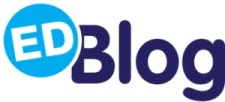Digital poverty is a growing problem in the United Kingdom that the coronavirus pandemic has exposed. In 2019, then-Labour Leader Jeremy Corbyn stated, “The internet has become such a central part of our lives. What was once a luxury is now an essential utility.”
Ultimately, a research report by the Low Income Tax Reform Group found that ‘a significant proportion of the UK is “digitally excluded” either through not having internet access or because of low levels of digital literacy.’
The coronavirus pandemic has identified key gaps in the ability of the workforce to work from home and also the ability of many children to learn from home. This also means with increased digital services that they could be left behind on both knowledge and opportunities. But what does the report say and what are the consequences of digital poverty both now and in the long term? This blog post explains.
Why has the coronavirus pandemic exposed digital poverty?
“Coronavirus has revealed the true scale of digital divide,” says Wayne Norrie, head of an academy trust in a disadvantaged area. “(We estimate) 60-70% of students won’t have laptops.”
He adds that many families rely on a single mobile phone for an internet connection which is “not realistic” for online learning and streaming live lessons.
Matt Morden, co-head of Surrey Square Primary School in South London also expressed concern.
If families are struggling, the priority is going to be food not data. Those without online connections miss sense of belonging and the closing of schools has brought the digital divide to the forefront.
Seb Chapleau, director of the Big Education conversation charity says that it is “a deep problem across many schools.”
Chris Tomlinson, chairman of the Co-op Academies Trust says online learning is “no good if the children don’t necessarily have the hardware to access the internet.”
What are the consequences of digital poverty?
In the 2012 digital exclusion report, it states:
- A significant proportion of the UK proportion of the UK is digitally excluded. As Government moves to self-serve channels, significant numbers who are unable to move online or who are not IT-literate may be disuaded from using Government services or be able to use them effectively.
- Small businesses are also affected by digital exclusion (being able to afford technology). (This is affecting livelihoods while people work from home).
- The drive for digitalisation could reinforce the social exclusion of a sizeable segment of the population. Many studies have identified a positive correlation between digital and social exclusion.
- A shift to e-demand channels will disengage the digitally excluded and compound exclusion.
- There is an ongoing need for the provision of high-quality public services. Continuing to tackle the digital divide is essential to ensure that public services are delivered effectively.
- Cost savings made by Governments through using online channels are displaced elsewhere – usually to the individual, charities or private sector companies.
What can be done to tackle digital poverty?
The Government has identified this problem to some degree, providing laptops and tablets to children it identifies as vulnerable.
However, laptops will become property of these educational establishment (rather than the individual) once the crisis is over – meaning that the issue of digital inequality will not go away.
Further, Harlow MP Robert Halfon has said that terrestrial TV should be airing more programmes suitable towards education (such as on BBC2 or the CBBC Channel). The Education Minister, Vicky Ford, had explained that BBC Red Button services had increased to allow for more learning through this channel.
You can read what the Education Minister had to say here.
How EDLounge can help?
At EDLounge we believe access to online educational means should be possible for all families.
Our services mean that pupils from KS2 to KS4 do not fall behind in their studies. With a wide range of lessons in Maths, English, Science and more aimed to challenge pupils and help them understand crucial topics on the curriculum. In total 11,000 lessons are available.
An easy to use, yet sophisticated tracking system means teachers and parents can utilise the software to monitor progress and areas of weakness. The programme has helped a large number of schools around the world improve attendance and pupil engagement in education.
EDLounge Limited was inspected by Ofsted in 2019.
For more information click here. Alternatively call 01909 568 338.









